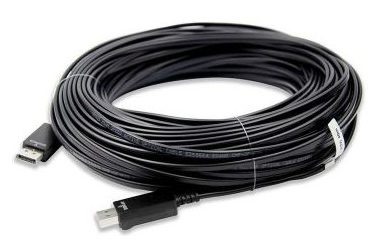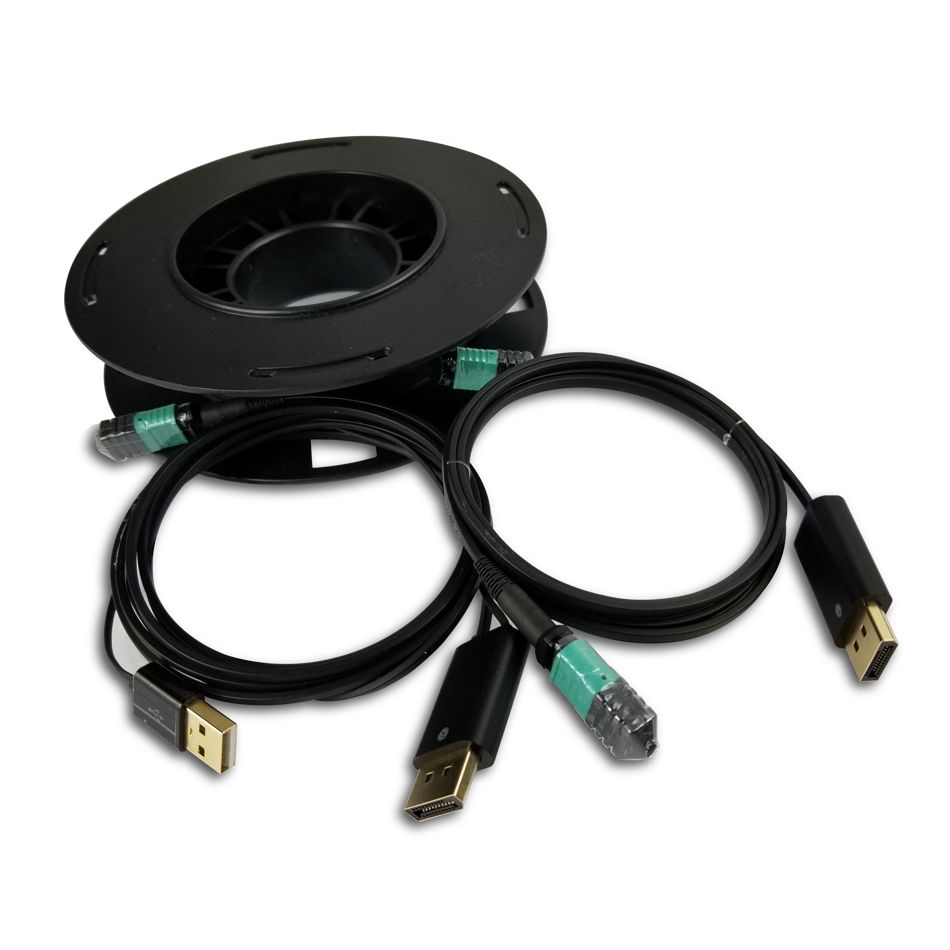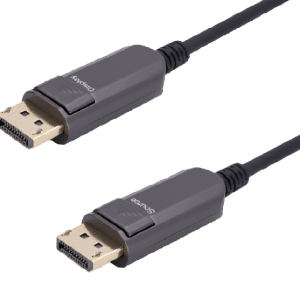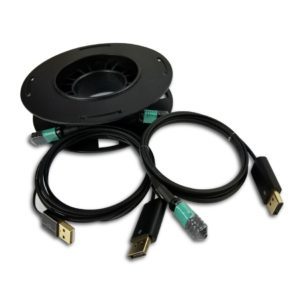Fiber optic video extenders carry digital audio/video signals over longer distances than copper cable extenders and work better against signal interference. Because of these advantages, fiber optic video extenders are preferred by pro A/V industry users as well as those working in special fields such as medical imaging, flight simulation, and virtual-reality display. There are different types of fiber optic video extenders offered by Vitex, and in this article, we compare them to show the pros and cons of each type.
Two main types of fiber optic video extenders are:
- Active Optical Cable (AOC)
- Detachable Fiber Extender
Active Optical Cables
Active Optical Cable types of video extenders uses a single integrated assembly of connectors and cable, much like common copper cables. Using an integrated assembly makes AOC simple to install and maintain. All that is required to install an AOC is to connect each end to the respective device. And, unlike copper cables, AOC video extenders are more flexible and smaller in diameter, making it ideal when connecting through tight space or turns. Note that all fiber optic video extenders are directional, so the transmitter connector, marked “TX” or “SOURCE”, must plug into a video source while the receiver connector, marked “RX” or “DISPLAY”, must plug into a display.

Detachable Fiber Extenders
Detachable types of fiber optic video extenders consists of connectors, cable(s), and optional converter boxes. The connectors are similar to those of Active Optical Cable, plugging into a video source or display, but without the attached cable. Because the connectors are separate from fiber cable, only the fiber cable needs to be run through a conduit or false ceiling, much easier than Active Optical Cable with large, attached connectors. Also, the detached nature of fiber cable means that it can be replaced easily with a different length or even patched to another display or source at ease.
Vitex offers two different styles of detachable video extenders: detachable box type and detachable dongle type. Detachable dongle type uses smaller form factor that includes optical and electronic circuitry inside a dongle to keep the product in small footprint, still keeping the advantage of having detachable cable.
Detachable box type has stand-alone boxes, one for transmitter and the other for receiver, with ports for appropriate video connectors and fiber optic port to connect to each other. Detachable box has its own power source so that it does not need to depend on power source via video port. This design makes detachable box type to be used where video port cannot supply power for auxiliary use. Detachable box is also preferred in applications where existing video connectors need to be used and the signal has to be extended over longer distance.
Whatever application or installation you require for fiber optic video extender, Vitex sales team can offer a right solution. For questions, contact us at sales@vitextech.com
Related Products





